Thread choice is the main backbone of the stitch. The stronger the thread you use, the longer the stitch wanna stick around & prevent the stitch from frying. Well, what kind of thread is used for blanket stitch? Which thread will make the blanket stitch stronger?
Among all the kinds of threads,
I normally use pearl cotton thread for blanket stitches. It’s strong and gives a gorgeous sheen that makes your stitches pop. It’s like the perfect mix of practical and pretty.
But hey, everyone’s got their preferences! Some sewing inspo stitchers swear by embroidery floss, while others lean toward wool. But which one is more reliable? Let’s figure out.
Main Facts:
- Embroidery,wool, cotton & pearl thread is best for blanket stitching.
- I love to use pearl thread for blanket stitches.
- 18-24 inch thread is enough for blanket stitch.
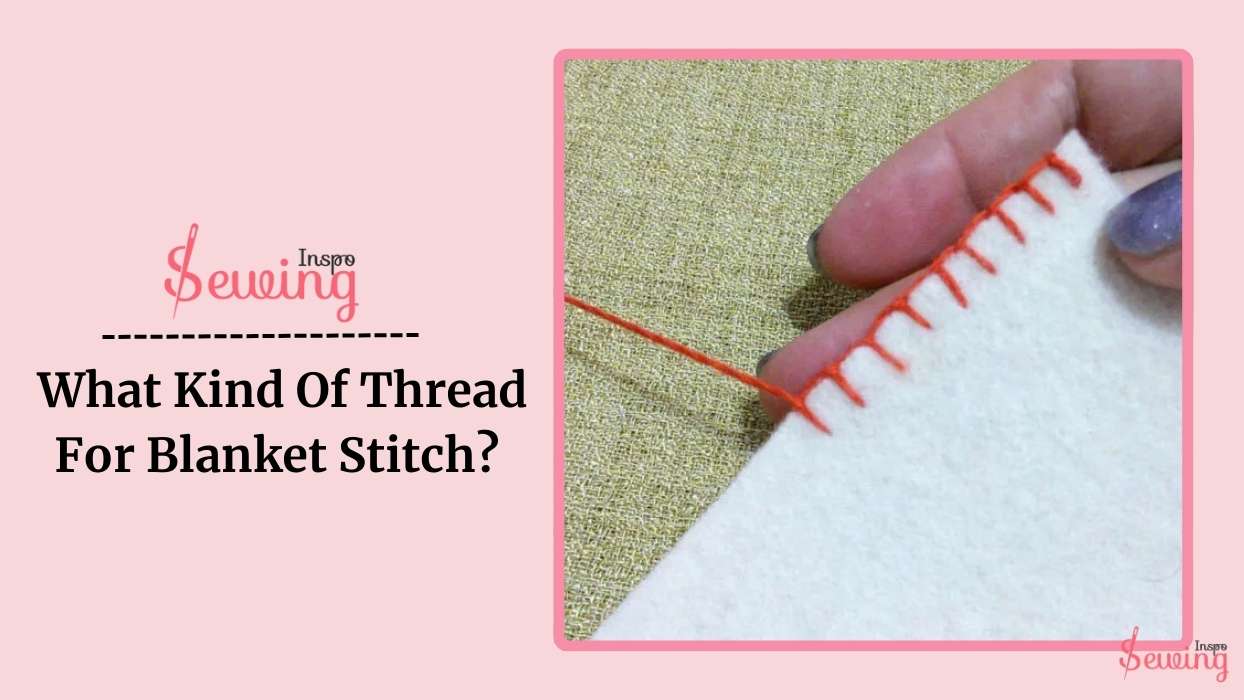
Table of Contents
What Kind Of Thread For Blanket Stitch?
I normally use pearl cotton thread for blanket stitch. This is my favorite thread for blanket stitch. A fun fact is you can use this thread for all kinds of blanket stitches. Here’s why:
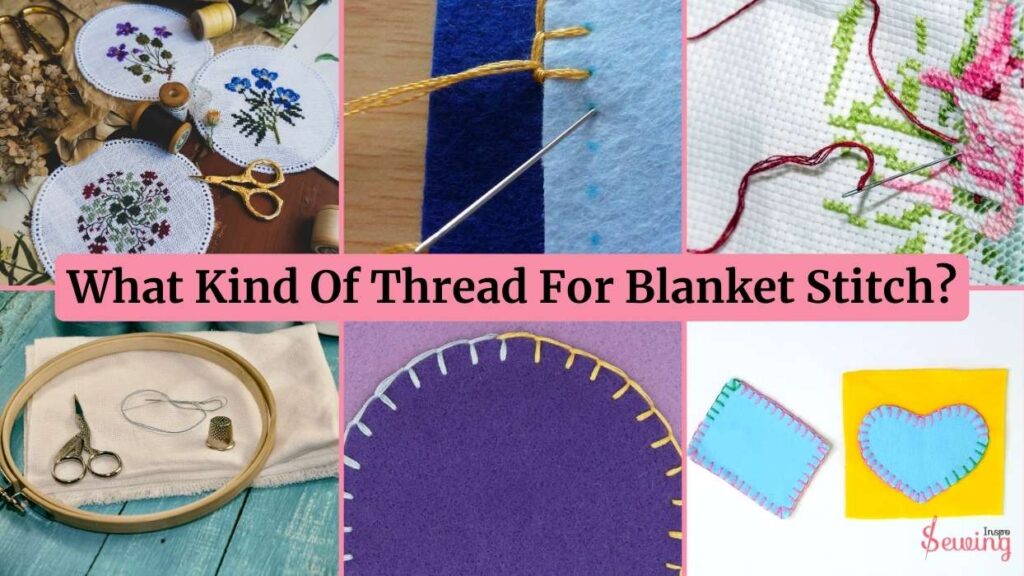
It holds up well, even with lots of handling, which is especially important if you’re stitching along the edges of a blanket. Plus, it’s available in different thicknesses (like #5, #8, etc.). So I can choose a different one based on my sewing project & stitch type.
However, rather than this, there is the other best thread for blanket stitch, too. Such as:
- Embroidery Floss
- Wool Thread
- Regular Cotton Thread
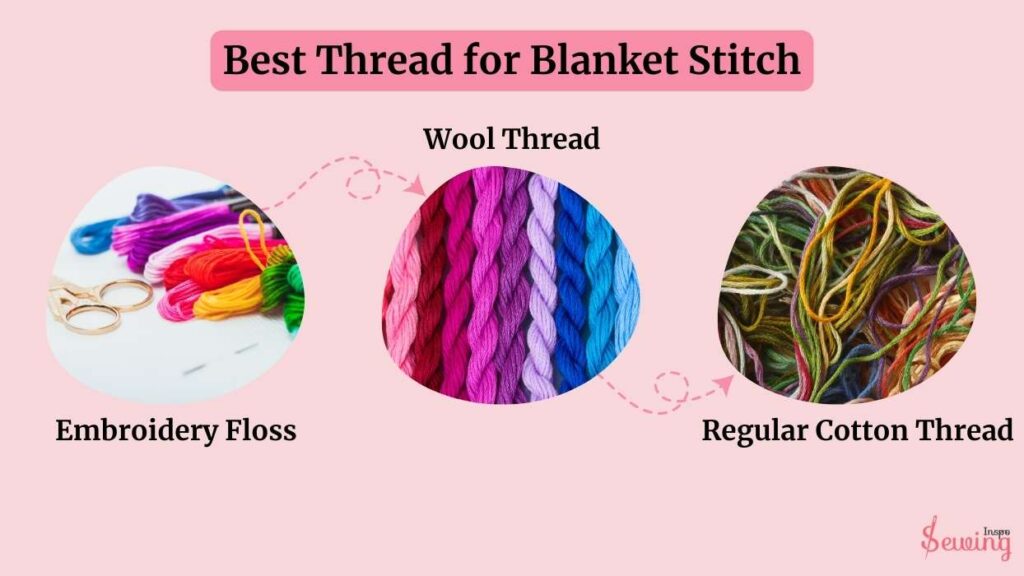
Just because I use pear cotton thread doesn’t mean you have to. You can use the above list too. Each of them serves a different purpose like Whip stitch vs blanket stitch.
If you want something finer or to match colors easily, embroidery floss is a great choice. It’s soft, flexible, and made of multiple strands you can separate. But it’s more delicate than pearl cotton, so it’s best for lighter fabrics. You can even secure a blanket stitch with it, which varies easily.
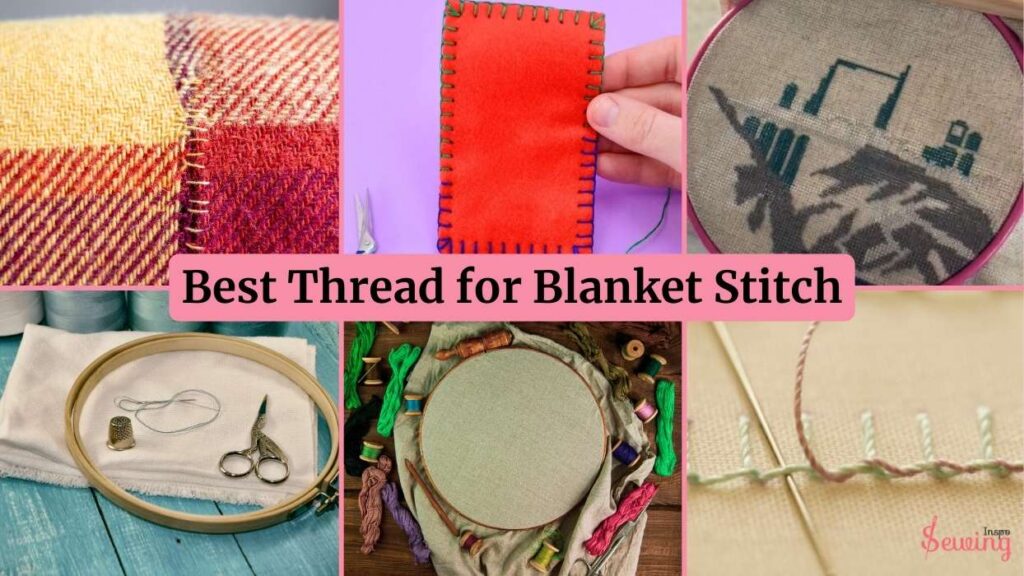
And,
Wool thread offers a cozier, textured look with a rustic vibe. It’s bulkier than cotton, perfect for plush projects like wool blankets. However, it is not as durable, so it is better for decorative stitching or embroidery. But don’t do blanket stitch leather with it cause it won’t hold it.
In a pinch,
Regular cotton sewing thread works, too. It’s thinner and less sturdy than pearl cotton, so your stitches may not stand out as much or last as long, but it’ll still get the job done.
So, what’s the best thread for blanket stitching among them? 🤔
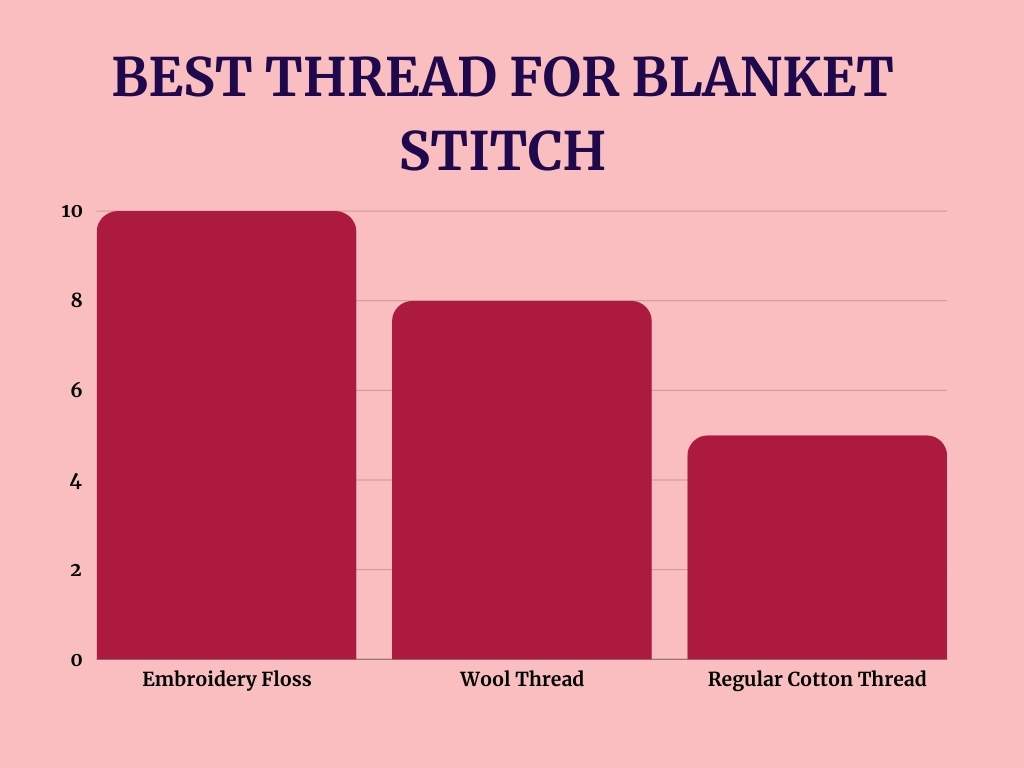
All work best in their way, but embroidery floss works best in all kinds of scenarios for blanket stitching. Whether for edge or decorative, it is best for all eras. You can even use it for long and short blanket stitch embroidery designs.
How Many Strands Of Thread For Blanket Stitch?
You can use 3 to 6 strands of thread for a blanket stitch. But I normally use 4 strands of thread. Perfect for any blanket stitch embroidery.
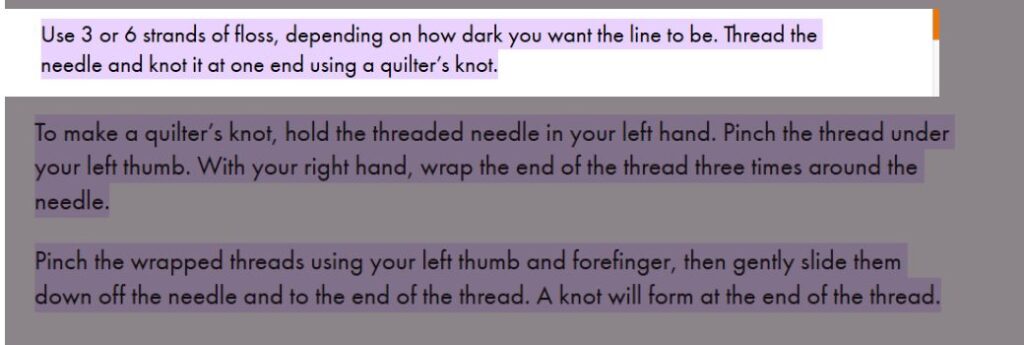
But don’t use it just because I did. The number of stands you use varies depending on your thread choice. For intense:
Typically, people use 2 or 3 strands for a nice balance of thickness and flexibility. You can adjust based on how bold you want the stitch to look.
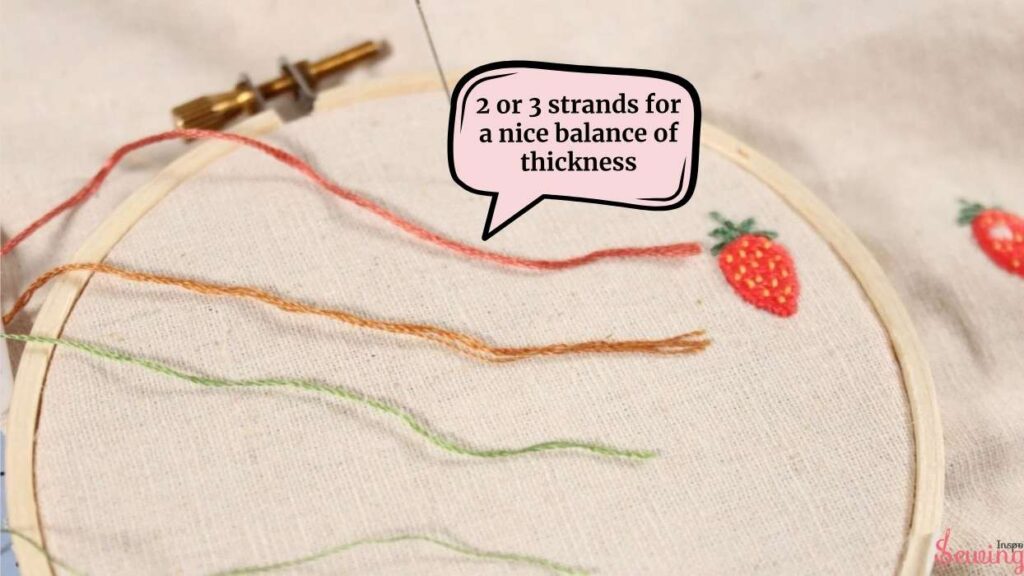
If you wish to use finer, more delicate stitches, use fewer strands (like 1 or 2). For a more prominent stitch, use 3 strands. Your thread choice will define what does a blanket stitch look like. So choice wisely.
And for Pearl Cotton,
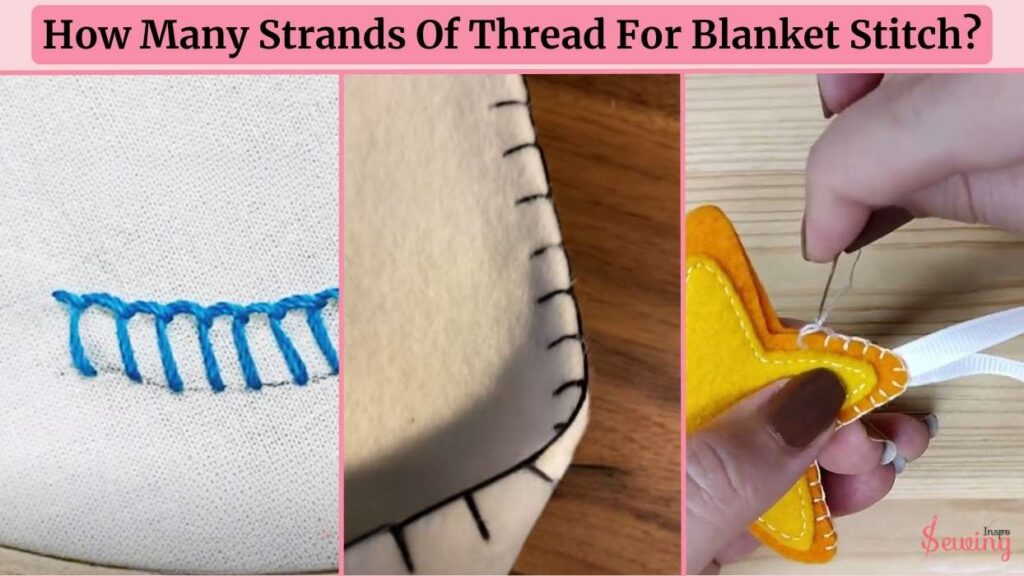
This thread is usually used as is, without separating it into strands. Its thicker, more defined texture is perfect for decorative blanket stitches where you want the stitch to stand. Also, Wool is often used in its full thickness.
So, there is no need to separate the strands. It naturally gives a coarser, bulkier stitch for a textured look.
How To Thread A Needle For Blanket Stitch?
After choosing the thread, the 2nd confusing thing is threading a needle. And it’s easy to do so.
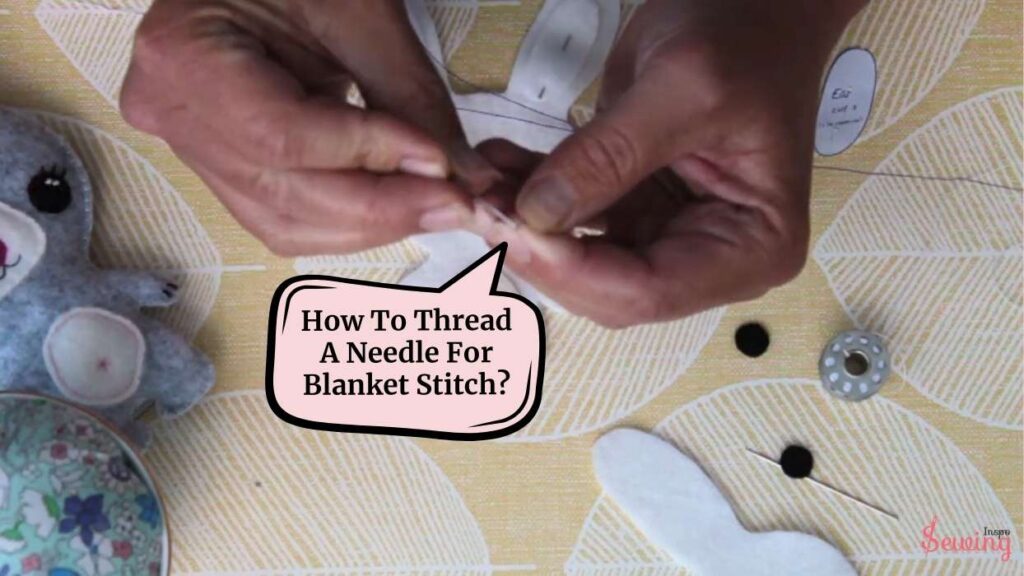
First, grab your thread and cut about 18–24 inches. Once you’ve chosen your number of strands, separate them carefully. This is even perfect for double stitch blanket pattern.
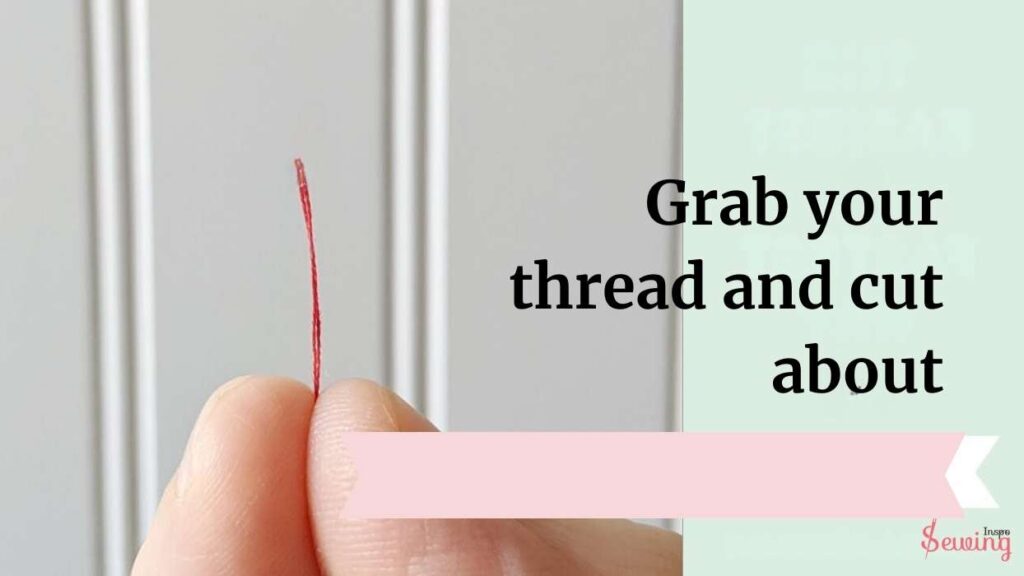
Now, take the thread and thread it through the eye of the needle.
If you’re having trouble getting the thread through (we’ve all been there!). Try moistening the end of the thread slightly or cutting it at an angle to make slipping through the needle’s eye easier.
Once the thread is through, pull it so there’s an equal amount on each side.
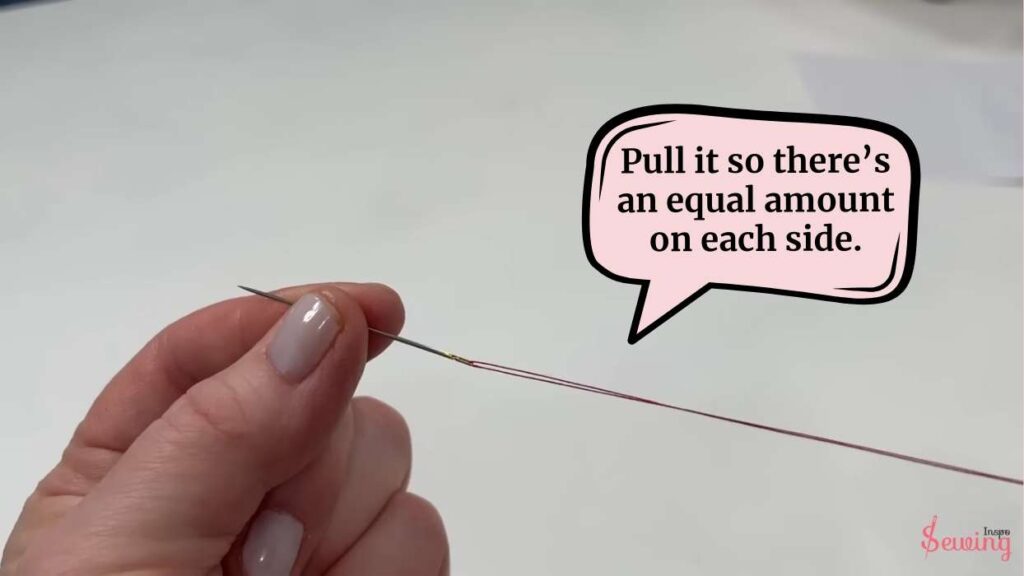
Then, tie a small knot at the end of the thread. This knot will keep the thread from pulling through the fabric as you stitch.
If you run out of thread, learn how to continue blanket stitch with new thread and repeat the flow.
How Much Thread For Blanket Stitch?
18-24 inch thread is perfect for blanket stitch. But I had no clue how much thread to use when I started doing blanket stitches. And it led to awkward moments like running out of thread halfway through a project or having too much left over!
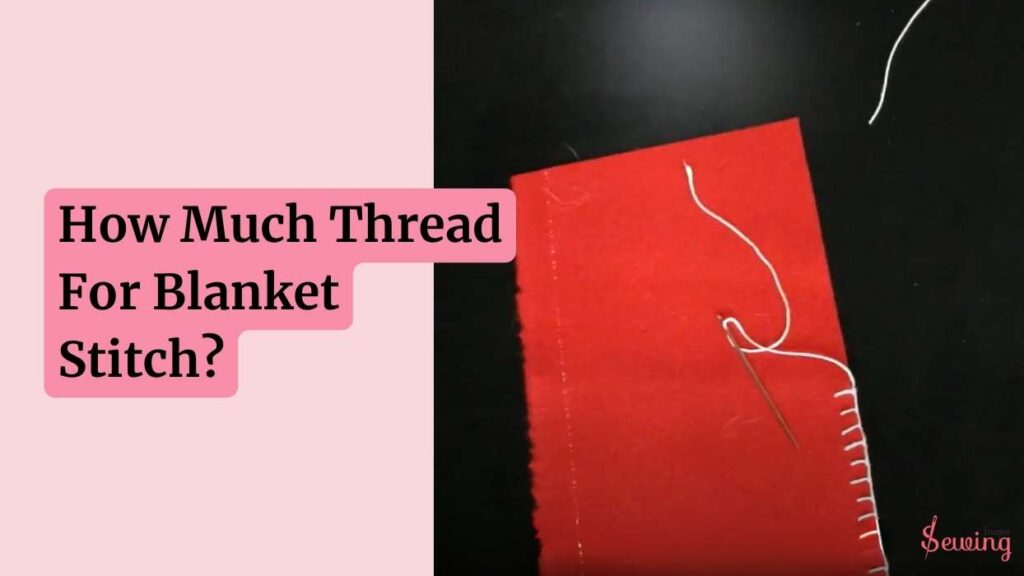
Over time, the amount of thread you need depends on the size of your project. For example-
- For small projects, you’ll likely need about 18-24 inches (45-60 cm) of thread at a time. This should be enough for a few rows of stitching.
- For larger projects (like blanket or quilt edges), you should cut longer lengths, around 36-48 inches (90-120 cm). I normally use this length for closed blanket stitches.
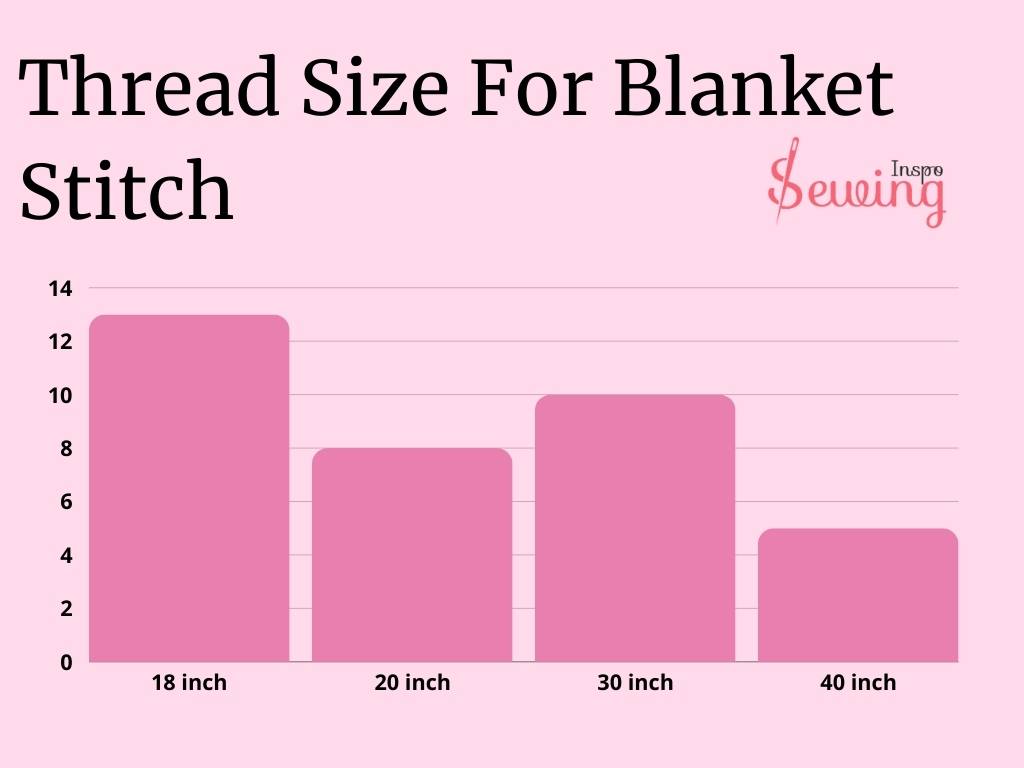
If you are doing blanket stitch leather, then you need,
Go for waxed polyester thread or waxed linen thread — they’re strong and glide through leather easily. Thread size? Stick with 0.6mm to 0.8mm thickness. If you want a chunkier look, you can go up to 1mm.
- Small project? → 0.6mm.
- Big, bold project? → 0.8–1mm.
If you’re stitching a whole blanket edge or something with a lot of stitching, estimate the total length based on how much space you need to cover. Then work in manageable sections, adding thread as you go. You can always cut more if needed.
But it’s better to start with too little than too much with the right tools.
Blanket Stitch Changing Thread
What! Did you take the advice seriously? And run of thread in the middle of blanket stitch? 😂 no worries, I was there too. Now, here’s the trick:
For the new thread, I just threaded my needle like usual and picked up right where I left off. To ensure the new thread blended in. I overlapped a little with the end of the old thread.
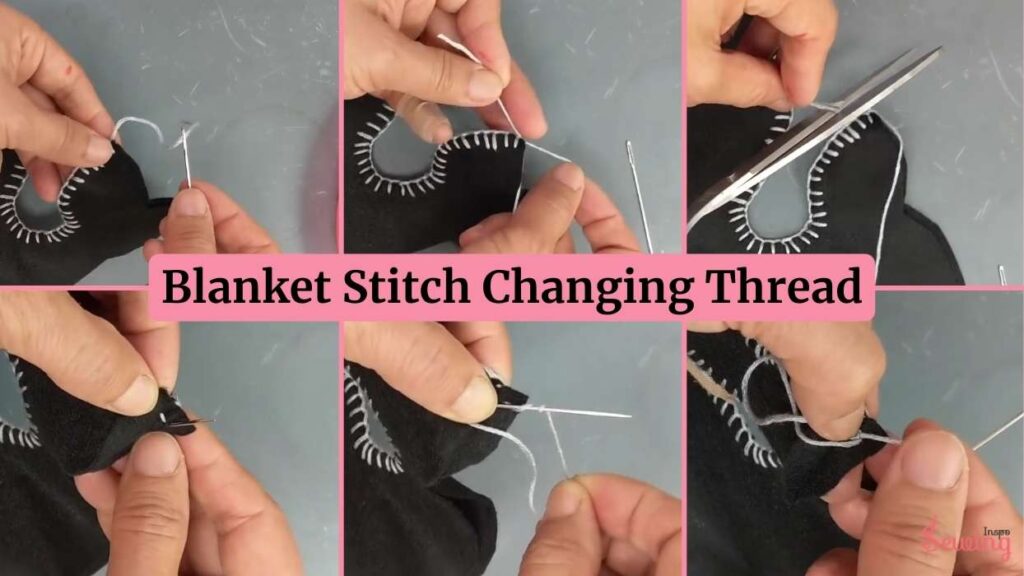
If you’re using the same color, it’s barely noticeable. Then, I tightened up the new thread as I went along, and everything looked seamless.
Sometimes, if I’m worried about the thread slipping out. I’ll backstitch at the start to hold it in place. But, honestly, it’s usually not necessary. Changing thread is just a quick pause in your stitching rhythm, and before you know it.
What Kind Of Thread For Blanket Stitch Pdf
If you got lost while doing the stitch, then this pdf is for you. Download it and use it whenever you need.
Outro
And that’s it! That’s all the thread deals for blanket stitching. If you can handle it right, your stitch will be fine. If you want more information, read our sewing book or watch our sewing tutorial.

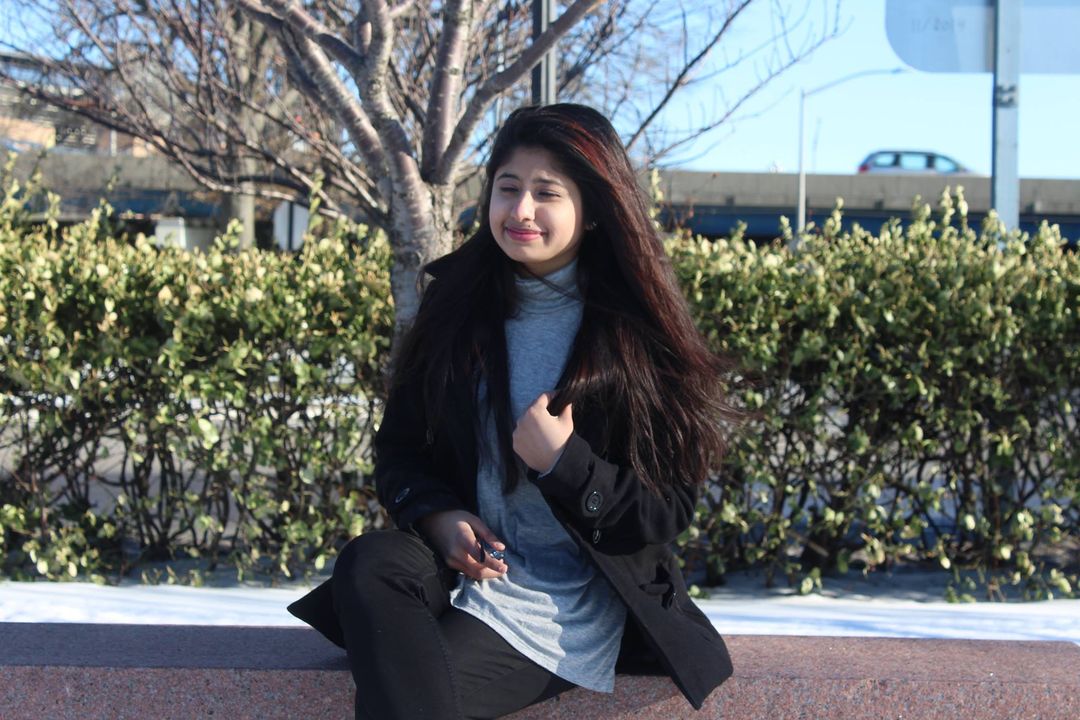
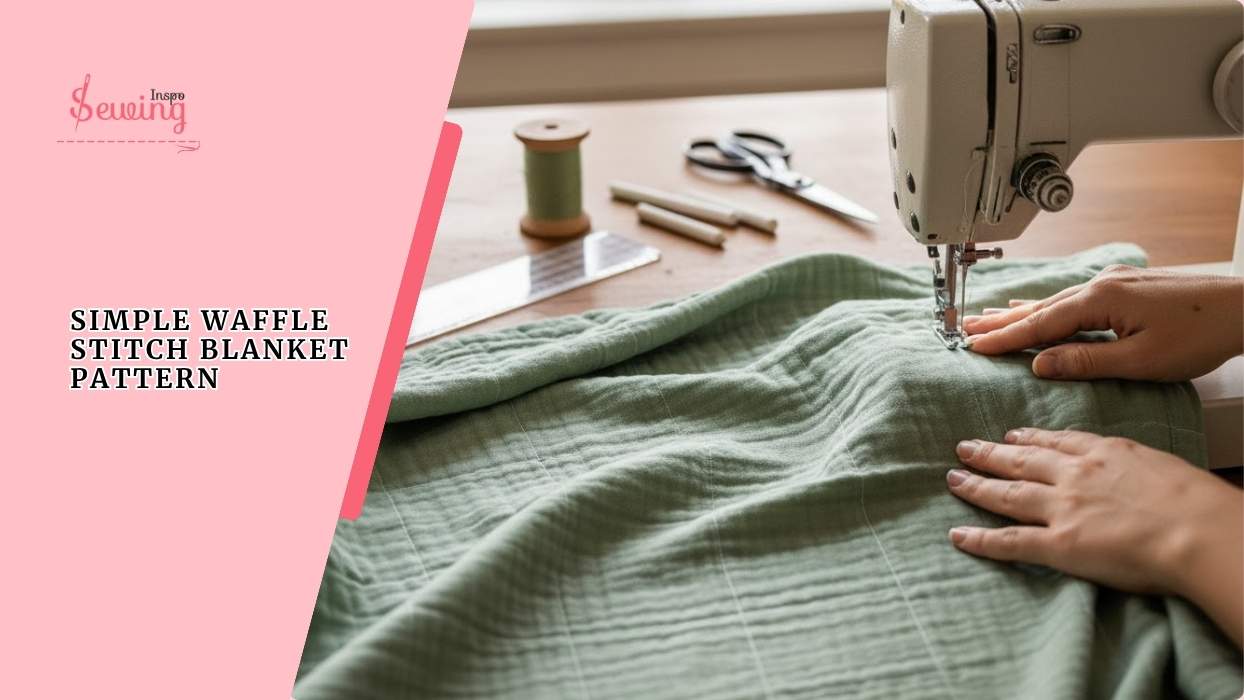
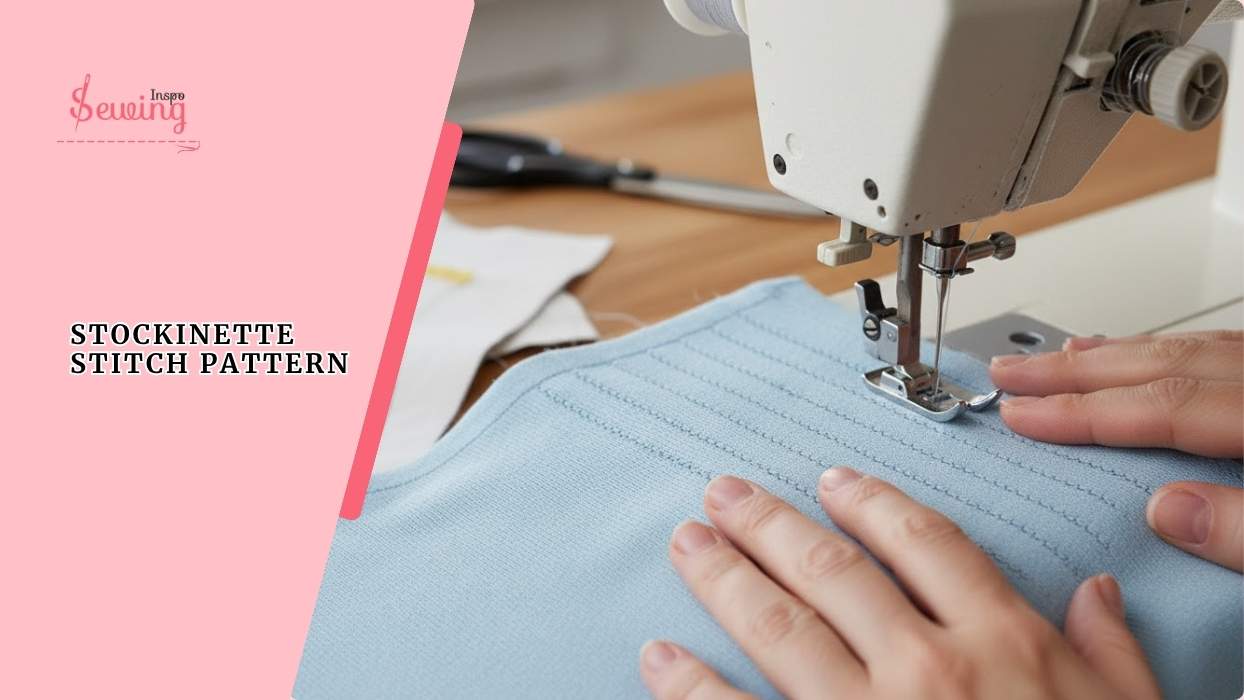
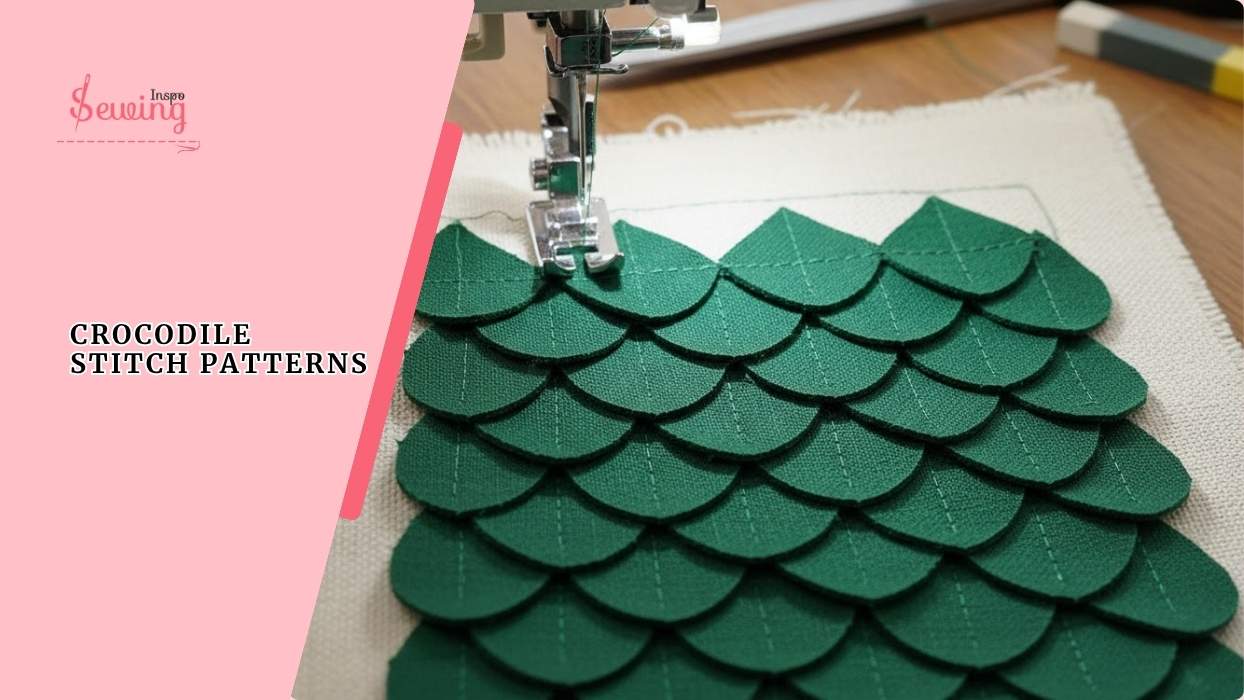
Leave a Reply